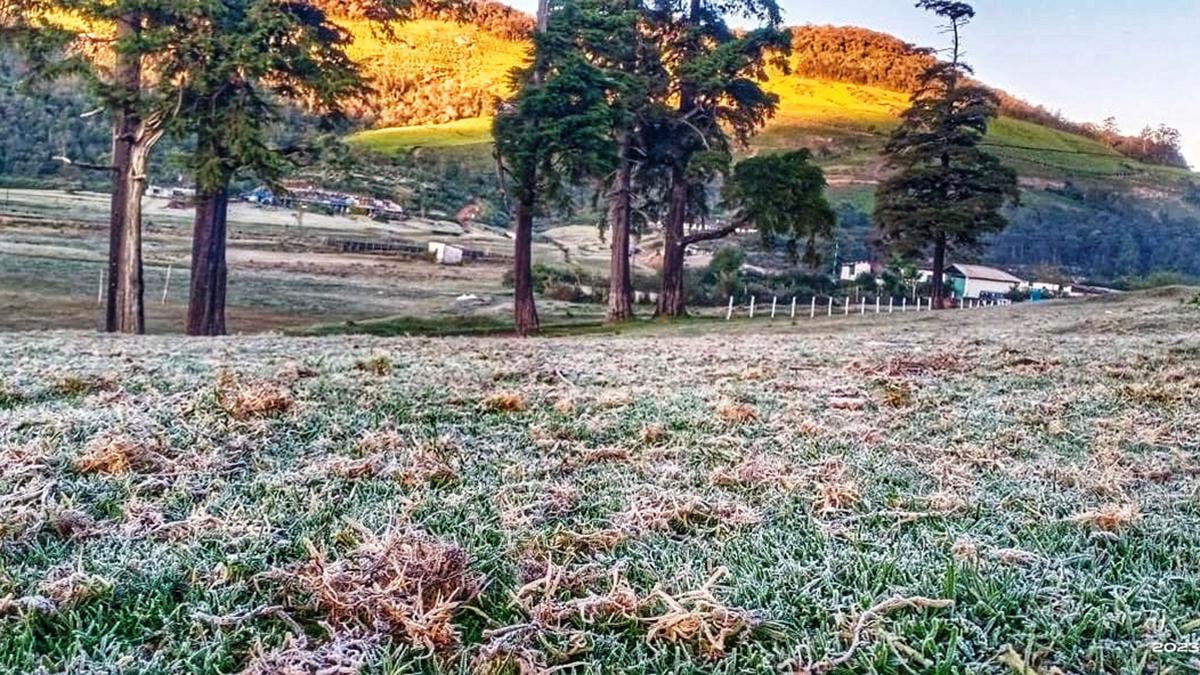Munnar witnessed the lowest temperature of the season with Chenduvarai Estate, Silent Valley Letchmi Estate, and Kannimallay witnessing -1°C on Thursday morning. The frost-covered grasslands at Devikulam near Munnar on Thursday morning.
| Photo Credit: SPECIAL AARANGEMENT
Even though the high ranges shiver with minimum temperatures plummeting to zero and below, especially in Munnar, the India Meteorological Department (IMD) is yet to feel the chill.
Despite having a record number of 101 automatic weather stations (AWS) across the State, the highest in the country, none of the weather stations recorded zero or sub-zero level until Thursday, while weather gauges of private agencies continue to record zero and lower temperatures in Munnar during winter.
With the mercury dropping below zero, Munnar is experiencing a cold wave-like condition for the past three days since the beginning of the winter season. Munnar recorded sub-zero temperatures at various places with Kannimala recording the lowest of -3° C on Wednesday. However, the data available with the IMD did not confirm mercury touching the levels in the current or the previous seasons.
According to the IMD statistics, the lowest temperature for the season so far was recorded on Thursday morning at Kundala dam with the temperature dropping to 0.6° C, followed by 0.7 ° C on Wednesday, and 3.3° C on Tuesday.
K. Santhosh, Director, IMD, Thiruvananthapuram, said though there were unconfirmed reports of mercury touching zero and sub-zero at Munnar, the IMD had no observatory in Idukki for confirming this.
IMD sources said non-IMD observatories had reported mercury dropping to zero many times in the past in Munnar. Even though there were 14 AWS in Idukki, the IMD had no representative observatory in the hill districts of Idukki and Wayanad. As a result, as per IMD records, the lowest average minimum temperature of Kerala was still around 13° C as it still calculated the average temperatures by considering the coastal and mid-land observatories only.
In order to ascertain the exact climate of the hill districts, an IMD observatory was essential at Munnar and Wayanad. An AWS cannot detect weather parameters such as visibility and cloud details and weather phenomena such as fog, mist, haze, avalanches etc. Only a departmental observer could do such measurements, said the source.
As Munnar is a popular hill tourist destination in the country, tourists checking the department website hardly get accurate data on minimum temperature, which is a major shortfall.
